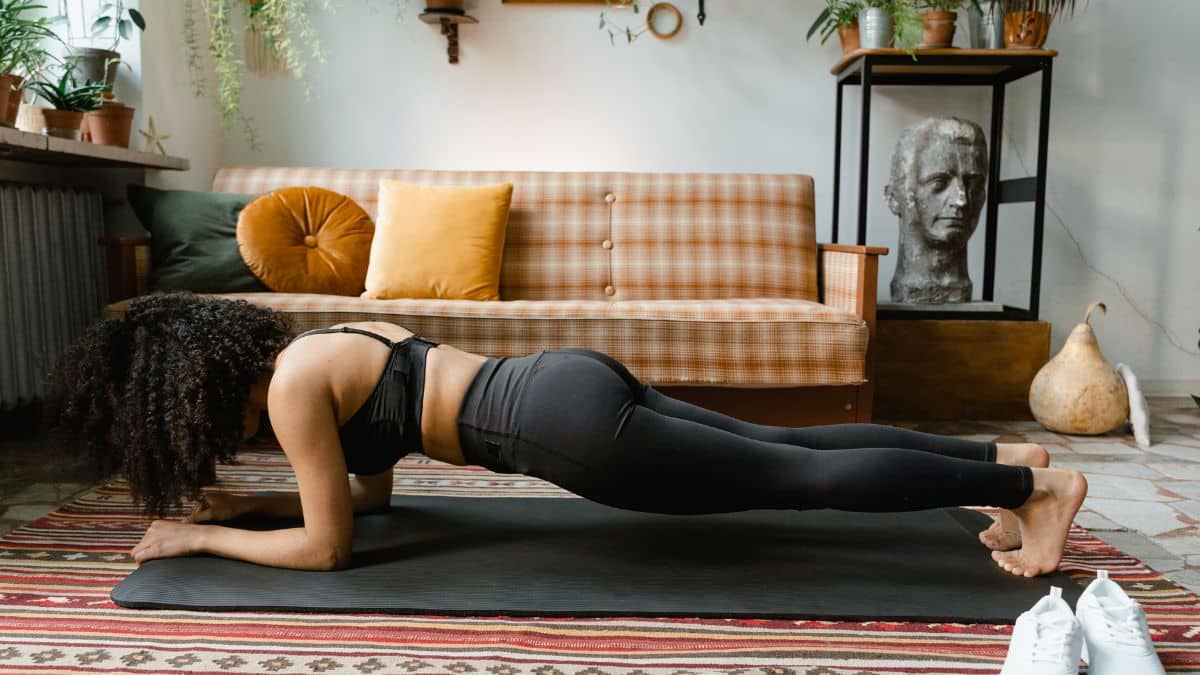Your core isn’t just for abs — it’s the foundation for a strong, pain-free back. Discover the best core exercises to support and strengthen your lower back.
💪 Introduction
Lower back pain is one of the most common issues for active people — and even more so for those sitting long hours or lifting heavy in the gym. While most people look for stretches or massages to relieve it, the real long-term solution is a strong core.
Your core and lower back work together to stabilize your spine, improve posture, and reduce the risk of injury. In this FaithNFIT guide, we’ll walk you through the best core exercises to support lower back strength — and how to train with purpose, not just aesthetics.
🧠 Why Core Strength Matters for Your Back
Your core includes more than just abs. It also involves:
- Transverse abdominis (deep abs)
- Obliques
- Multifidus
- Erector spinae
- Diaphragm & pelvic floor
A strong core:
- Keeps your spine stable during movement
- Reduces pressure on the lumbar spine
- Helps you lift more safely
- Improves balance and posture
🏋️ 7 Core Exercises That Strengthen the Lower Back (Without Strain)
1. Dead Bug
✅ Builds deep core strength while keeping your spine neutral
⏱️ Beginner-friendly and low-impact
How to:
- Lie on your back, arms and legs in the air
- Slowly lower opposite arm and leg, then return
- Keep your back flat on the floor throughout
2. Bird Dog
✅ Improves cross-body coordination and spinal control
🐶 Low-load, back-friendly movement
How to:
- On all fours, extend one arm and the opposite leg
- Hold for 2–3 seconds, then switch
- Focus on balance and avoiding hip rotation
3. Glute Bridge
✅ Strengthens glutes and core while reducing lumbar tension
How to:
- Lie on your back, knees bent, feet flat
- Drive hips up by squeezing your glutes
- Hold for 2 seconds, lower slowly
FaithNFIT Tip: Weak glutes = tight lower back. Strengthen both.
4. Plank (and Side Plank)
✅ Builds core endurance and spinal stability
How to:
- Elbows under shoulders, core tight
- Don’t let hips sag or rise
- Hold for 30–60 seconds
- Add side planks to target obliques and lateral stability
5. Pallof Press
✅ Anti-rotation core exercise that protects the spine
How to:
- Use a resistance band or cable
- Stand perpendicular to the anchor point
- Press straight out, resisting rotation
- Return and repeat
Builds strength in the transverse abdominis, your “corset” muscle.
6. Stability Ball Rollouts
✅ Advanced move for anterior core control
How to:
- Kneel behind a stability ball
- Roll it forward slowly, keeping your hips and spine aligned
- Pull back to start using core control
7. Farmer’s Carry
✅ Trains your core through loaded, real-world movement
How to:
- Pick up two dumbbells or kettlebells
- Walk with good posture for 30–60 seconds
- Keep shoulders down, core tight
Bonus: Also builds grip and upper back.
🏋️ Sample Core Routine for Lower Back Support
2–3x per week, after your main workout or as a standalone session.
| Exercise | Sets | Time/Reps |
|---|---|---|
| Dead Bug | 3 | 10–12 reps per side |
| Bird Dog | 3 | 8–10 per side |
| Glute Bridge | 3 | 15 reps |
| Plank + Side Plank | 3 | 30–60 seconds each |
| Pallof Press | 3 | 10 reps per side |
🙏 FaithNFIT Perspective
A strong core is more than just looking lean — it’s about supporting your purpose and protecting the body God entrusted to you. Every rep is a way to reinforce your foundation — physically and spiritually.
“The wise man built his house on the rock…” – Matthew 7:24
Your core is that rock.
Don’t just train for abs. Train for alignment. Train to move better, serve longer, and live stronger.
✅ Key Takeaways
- A strong core is key to lower back health and injury prevention
- Focus on stability, endurance, and balance — not just crunches
- Train your core 2–3x/week with intentional movement
- Integrate anti-rotation, glute activation, and deep core work
📎 Latest Articles:
- Physically Active Careers That Make It Easy To Stay Strong
- Can Fitness Improve Love for Couples Over 40?
- Why Is a Protein Breakfast Important Before Church?
- Why Use a Weighted Vest in Your Faith-Fueled Fitness Routine?
- Can Faith Help You Break Through a Fitness Plateau?
Subscribe now and get a 14-day free trial workout app for iPhone users.






